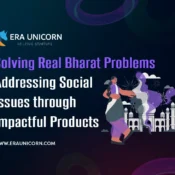
Sales Channels in India: From Street Markets to Social Commerce
India, a land of diversity, is not just known for its rich culture and traditions but also for its thriving business landscape. When it comes to startups and businesses, choosing the right sales channels can make or break your success. In this blog, we’ll explore the sales channels in India, from the traditional street markets to the emerging world of social commerce, to help you understand the choices you have as an entrepreneur.
1. Street Markets Sales (Haats and Bazaars)
Street markets, also known as “haats” and “bazaars,” have been the heart and soul of Indian commerce for centuries. These vibrant and bustling markets are where you’ll find a wide variety of products, from spices to clothing and jewelry to electronics. Setting up a stall in these markets can be a cost-effective way to reach a diverse customer base.
Pros:
- Rich Cultural Experience: Street markets provide an authentic Indian shopping experience for both locals and tourists.
- Low Entry Barrier: Setting up a small stall or cart can be relatively inexpensive.
- Instant Feedback: You can directly interact with customers and gather valuable insights.
Cons:
- Seasonal Variation: Sales can fluctuate depending on the time of year and location.
- Limited Reach: Your customer base is limited to those who visit the market.
2. Local Retail Stores and Sales
Local retail stores, often referred to as “kirana stores,” are a cornerstone of Indian retail. They are small, neighborhood shops that stock a wide range of daily essentials and sometimes even specialty products. Collaborating with these stores can be a way to tap into a loyal customer base.
Pros:
- Convenience: Customers can easily access your products when they visit their local store.
- Trust: Many customers have a long-standing relationship with their local retailers, which can boost your brand’s credibility.
Cons:
- Limited Space: Shelf space in local stores may be limited, making it competitive for product placement.
- Payment Delays: Some retailers may have a longer payment cycle, affecting your cash flow.
3. E-commerce Platforms
With the advent of the internet and smartphones, e-commerce has boomed in India. Platforms like Amazon, Flipkart, and Snapdeal have become household names. Setting up your store on these platforms can help you reach a vast online audience.
Pros:
- Wider Reach: You can potentially reach millions of customers across the country.
- Convenience: Customers can shop from the comfort of their homes.
- Analytics: E-commerce platforms often provide valuable data and analytics to help you refine your strategy.
Cons:
- Competition: The online marketplace is highly competitive, and standing out can be challenging.
- Fees: E-commerce platforms charge fees for using their services, which can impact your margins.
4. Social Commerce
Social commerce is an exciting and rapidly growing sales channel in India. It involves using social media platforms like Facebook, Instagram, and WhatsApp to sell products directly to customers. It leverages the power of social networks to drive sales.
Pros:
- Personalized Marketing: You can tailor your products to the preferences of your social media followers.
- Low Overheads: Compared to setting up a physical store, social commerce has lower operating costs.
- Direct Engagement: You can directly interact with customers, answer their questions, and build relationships.
Cons:
- Digital Literacy: The success of social commerce relies on your target audience’s familiarity with social media and online shopping.
- Logistics: Managing product delivery and returns can be challenging, especially for startups.
In conclusion, India offers a diverse array of sales channels for startups, ranging from traditional street markets to cutting-edge social commerce. The key is to understand your target audience, product, and budget before choosing the right sales channel or a combination of channels to maximize your business’s success. Remember that adaptability and innovation are essential as the Indian market continues to evolve in response to changing consumer behaviors and technology trends.



